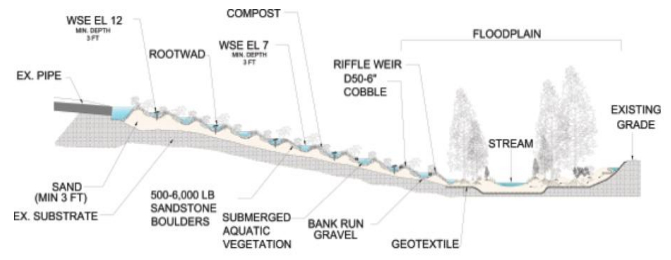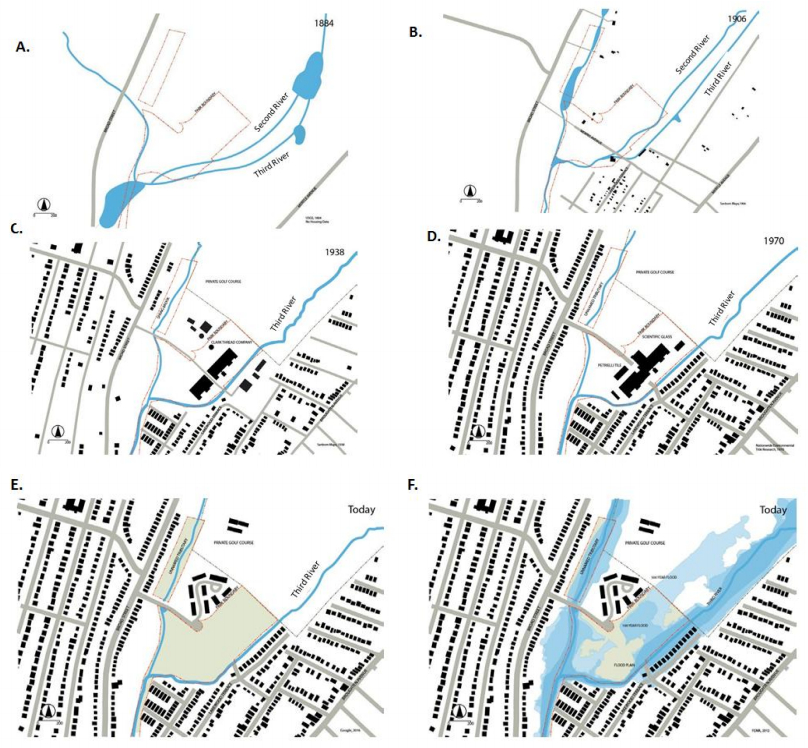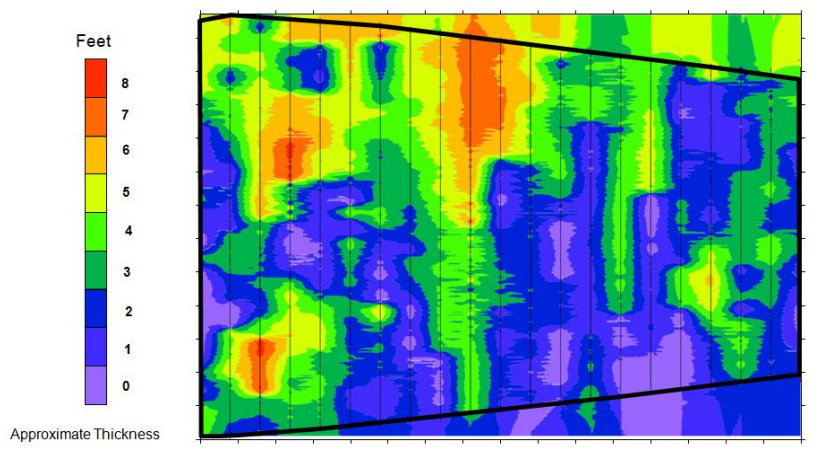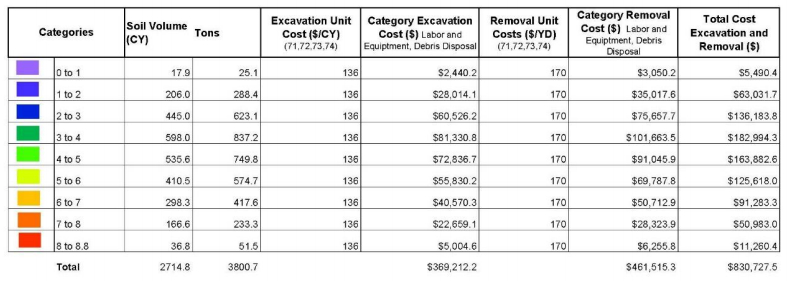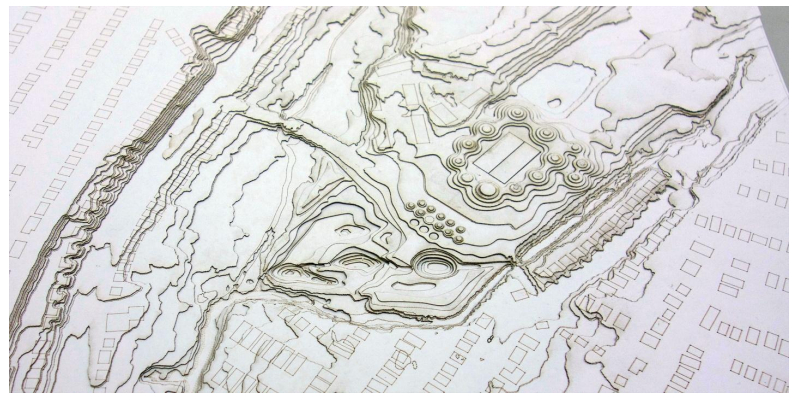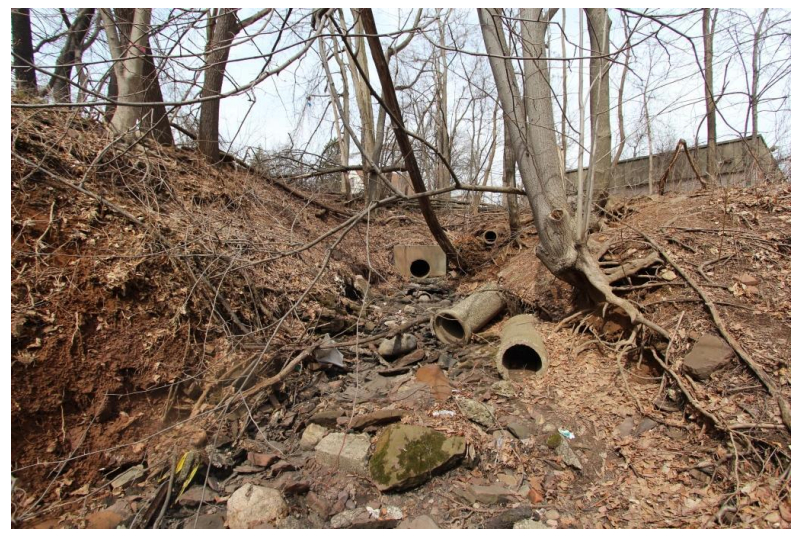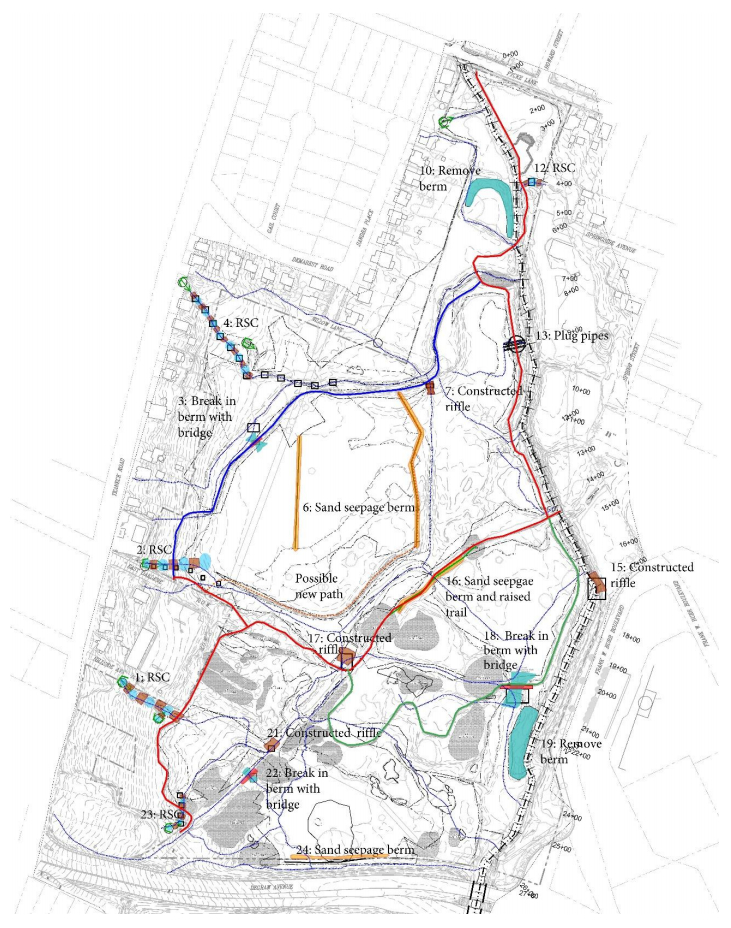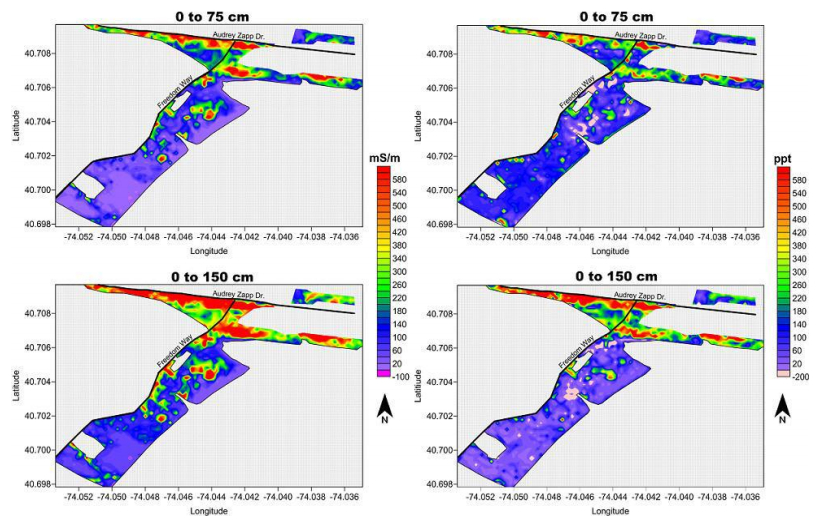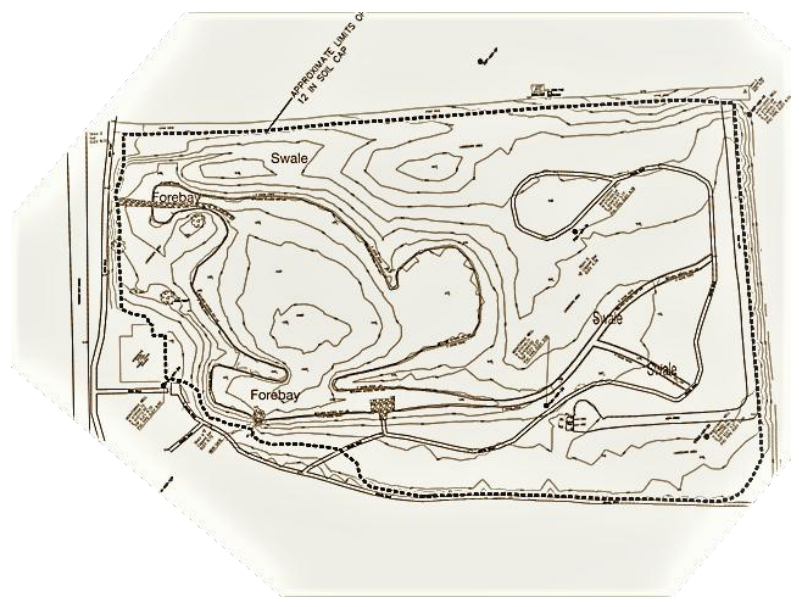1. Introduction
Rapid urbanization is producing enormous ecological change [1]. Fifty-four percent of the human population lives under urban conditions, and this proportion is projected to reach 60% of an expanding population within the next 13 years [2,3]. Urban residents accounted for 82% of the total U.S. population in 2015 [4]. Worldwide, urbanization is identified as a primary cause of wetland alteration and drainage [5,6,7,8]. Conversion to urban upland accounted for 83% of U.S. estuarine wetland losses observed between 2004 and 2009 [9]. Urbanization continues to be a significant cause and a leading risk factor in predicting the loss of U.S. estuarine and palustrine wetlands [10,11,12,13].
Well documented beneficial functions provided by wetland ecosystems [14] are of great ecological value in urban settings close to where people live [7,15,16,17,18]. Wetlands can also provide critically needed open space within a dense urban landscape [19,20]. However, urban landowners have been unable to monetize these beneficial wetland functions, and competing uses for scarce and valuable land can be powerful financial incentives for draining and filling urban wetlands [21]. Filling of wetlands has been supported by mitigation banking options that allow compensatory mitigation for wetland destruction [22,23,24]. The continuing loss of wetlands in urban locations [25] highlights the urgency of restoring or recreating wetlands within urban landscapes whenever feasible.
However, restoring or replacing urban wetland functional and structural attributes once they are lost has proven to be difficult [26]. Discharge of fill into wetlands is regulated under the Clean Water Act Section 404 [27], which is administered jointly by the US Army Corp of Engineers and the US Environmental Protection Agency (USEPA). Guidelines developed by USEPA to support successful wetland restoration outcomes include: restoration of ecological integrity, natural structure, and function (s); restoration designs that fit within an entire watershed; use of a reference site; establishment of clear, achievable, and measureable restoration goals; and anticipation of future changes [28]. However, the urban landscape is a mosaic of diverse structures, transportation corridors, and mixed land uses, where natural disturbance events (e.g., flooding, fire) are socially unacceptable. Nutrient and pollution inputs are often substantial, and short-or long-term environmental stressors may continue to affect a site post-restoration. When attempting wetland restoration within a highly urbanized context these EPA guidelines require significant modification to be applicable [17,29,30].
USEPA acknowledges that a wetland's composition, structure, and function is dependent on the landscape position and watershed where the wetland is located; however, recommended assessment of restoration "success" continues to be based on comparison to "natural" wetland benchmark standards [31]. We suggest that when considering rebuilding or creating wetlands under urban conditions, the paradigm of restoration (defined by the Society for Ecological Restoration (1990) as: the process of intentionally altering a site to establish a defined, indigenous, historic ecosystem) must shift to a paradigm of rehabilitation (Merriam-Webster: bring to a condition of health or useful and constructive activity). If urban wetland rehabilitation is to be successful, current regulatory paradigms concerning the use of undisturbed reference sites and predictable ecological trajectories must change [32]. Opportunities to compensate for wetland loss (mitigation) in heavily urbanized areas are extremely limited, and so regulatory flexibility must support and encourage restoration projects that enhance ecological values and functions.
2. Urban wetland restoration challenges
In an effort to improve consistency and accuracy in determining the "success" of wetland restoration projects, Brinson and Rheinhardt [33] proposed development of permit standards that could be used to compare ecological functions at a restored site with those of a non-disturbed "reference wetland (s)". This approach was embraced by permitting regulatory agencies (see [23,24] for an in depth discussion), and so specific criteria relative to reference site (s) are included in wetland discharge/fill permits [34]. These permit requirements assume that physical structure, most often measured by vegetation species dominance, aerial vegetation cover, and/or percentage of invasive species, is an accurate surrogate for wetland functional attributes. Typical permits also assume that a monitoring period of 5 years is sufficient to evaluate meeting these targets. If the permit targets are met, the project is deemed a "success"
[24]. However, wetland research and analysis of permit monitoring data suggests that wetland structure is not a surrogate for function [35,36]. Furthermore, permit targets have been found to be inconsistent and subjective [23], and 5 years is not enough time to judge the trajectory of longer term wetland function or structure [32,35]. Restoration "success" rates, as measured by meeting permit targets, are often less than 50%, primarily due to poor landscape position and inappropriate hydrology [24].
In urban watersheds where stormwater drainage systems alter water flow patterns, impervious cover precludes water infiltration, streams have been channelized, and hydric soils are filled, compacted and/or drained, restoring a wetland's pre-development hydrology, structure, function, or ecological integrity within the landscape is not feasible [37]. Urban restoration within a surrounding "natural" context is impossible. Non-urban reference site (s) and qualitative regulatory success metrics do not accurately reflect short-or long-term restoration site conditions or environmental stressors in urban settings. Therefore, predicting achievable long-term restoration goals and anticipating future trajectories is at best guesswork for wetlands in urban watersheds [38]. Wetland degradation associated with urbanization make these projects particularly challenging [39], and the approaches that govern restoration processes in less developed rural or suburban landscape settings must be modified or may not even apply. These issues are compounded by the relative lack of published scientific data related to urban wetland restoration successes and failures, an acknowledged data gap that has persisted for more than two decades [7,38,39,40,41,42].
2.1. Restoration within a landscape and watershed context
Site hydrology resulting from interactions between the landscape and the hydrologic cycle governs wetland type, functional attributes, successional development, and long-term maintenance needs [43]. Modern urban stormwater management systems are constructed to move water away from development as rapidly as possible, creating high energy, "flashy" altered watershed hydroperiods that contribute to erosion and sedimentation [44,45], while shifting the composition and abundance of wetland flora and fauna communities [17,46]. When urban land uses increase impervious surfaces, the stormwater-generated runoff alters wetland stream flows, increases erosion and sediment transport, and reconfigures stream channel morphology, which increase flood peaks and storm discharges [25]. Urban stormwater conveyance systems create point drainage at surface-water outfalls, whose high flows increase erosive effects [25]. Groundwater storage and recharge are altered due to reduced infiltration and/or barriers that inhibit surface-groundwater connections.
Available low-lying urban sites, whose topography is appropriate for wetland restoration, are often contaminated and/or contain significant quantities of anthropogenic fill materials. Adjacency to parking lots, highways, or industrial development affect water quality and site hydrology, potentially increasing the challenges in meeting wetland functional targets. If a restoration site is designated as a brownfield or landfill, regulations prohibit breaching protective caps and/or allowing water to infiltrate the underlying substrate [47]. Due to impacts from adjacent sites, the degree of difficulty in remediating contaminated sites, and/or the potentially high costs of brownfield remediation or fill removal, innovative restoration design options must be considered [41,47]. Pertinent questions may include: "Can fill materials remain onsite and/or be reused beneficially?"; "How can the public be protected from contaminated soils or fill materials?". Therefore, designing urban wetland projects that utilize stormwater runoff as an input, and restructuring the stormwater flows to mimic natural flow paths, infiltration patterns, and groundwater recharge can be critical success factors in supporting planned wetland functional capacities and vegetation patterns. To what extent can designed hydrology, landscape position, and vegetation most closely support desired functions in a cost-effective manner?
2.2. Urban versus reference site hydrology and vegetation
Fine-scale hydrologic conditions altered in urban systems (hydroperiods, sedimentation, and anthropogenic inputs (i.e., excessive nutrients, contamination, litter)) may preclude the reestablishment of plant assemblages found in undisturbed reference sites and/or affect plant community patterns of succession [17,48]. Urban predatory pressures also structure vegetation patterns, as seen with Canada goose (Branta canadensis) herbivory of wetland restoration plantings [17]. Vegetation in restored wetlands may also be less complex than in undisturbed marshes [49,50].
The velocity and depth of waters flowing through wetlands determine the structure of macrophyte diversity and abundance. Walsh et al.
[51] have coined the term "urban stream syndrome" to describe the results of urban stormwater running off impervious surfaces. The hydrologic changes associated with this syndrome include diminished hydroperiods and lower water tables that produce drier and more aerobic soils [52]. Conversely, freshwater macrophyte species diversity, determined by hydroperiod, is predicted to increase in shallow waters and under low water velocities [53]. Drier and aerobic soil conditions reduce the ability of soil microbes to remove excess nitrogen from surface waters through denitrification. Restored wetlands may also be deficient in organic carbon, which limits denitrification functional potential [52]. The success of invasive species may be the result of complex and diverse plant responses to soil variables, as well as uses of properties adjacent to urban wetlands [54]. Drier urban hydroperiods and/or excess nutrient inputs can favor non-native competitors, such as Phragmites australis [55], although, Phragmites uptake of excess nitrogen inputs may be a positive contribution within a watershed context.
Considered an invasive whose presence constitutes a "failure" to meet permit targets set by regulatory agencies, Phragmites is often used in constructed treatment wetlands [56], and has been shown to accumulate nutrients and heavy metals in plant tissues [57], attributes that are beneficial in an urban environment. Native vegetation may also have undesirable attributes in an urban setting, as demonstrated by Weis & Weis [58]. Their experiments showed that native Spartina alternaflora re-released heavy metals into the environment via leaf salt glands, an evolutionary adaptation to estuarine salinities. In the metal-contaminated Hudson-Raritan estuary's urban wetlands, Spartina replacement of invasive Phragmites inadvertently contributed to heavy metal bioavailability.
Conversely, urban wetlands can be designed to improve stormwater quality by capitalizing on their denitrification potential, ability to sequester metals, and remove organic compounds [60,61]. However, improving stormwater quality is not straightforward, and fluctuation in the pH of urban wetlands associated with Phragmites vegetation has been shown to release heavy metals present in stormwater runoff [57]. Sediments, nutrients and pollution are well documented in urban stormwater runoff; chemical transformations occurring at the wetland sediment-water interface determine the fate of these compounds (for a review of this extensive topic see [5]). Therefore, design of urban wetland vegetation assemblages and planned successional trajectories must consider local urban environmental factors that differ from conditions in non-urban reference sites, as well as urban unintended consequences related to the presence of contaminants and eutrophication pressures. Landscape designs that maximize wetland biogeochemical cycling functions to remove nutrients, biotransform organic contaminants or sequester metals may be a high priority urban restoration goal that is not comparable to an undisturbed reference site.
2.3. Rehabilitation within an urban socio-economic context
An additional unique aspect of wetland restoration or creation under urban conditions is the socio-economic interactions between human residents and the wetland site. "Successful" outcomes deemed beneficial by local residents or elected officials (e.g., flood control, developable land, recreational open space) may conflict with outcomes desired by regulators, landscape architects, professional planners, or environmental engineers (e.g., functional wetland attributes such as water purification, habitat values). Outcomes desired by the community could also differ significantly from restoration "success" in non-urban projects [18].
Public support for, or resistance to, urban wetland projects may be based on aesthetic values that are not correlated with ecological values [59,62,63]. Urban residential property values can be positively or negatively affected depending on proximity to a wetland (houses closer to a wetland were higher in value), as well as the type of wetland (open water ponded wetlands were preferred over forested wetlands) [21,62]. Casagrande [59] proposes that evaluation of urban wetland restoration success need not include re-creation of an historic landscape, but must include the human benefits derived from a restoration. Felson and Pickett [41] argue that in order to be successful, urban wetland restoration must go beyond purely ecological and environmental considerations, and include as design factors the urban context, desired human amenities, and perceptions of public safety. These versions of a "successful" restoration include connecting adjacent human populations with the non-human wetland ecosystem. The best achievable urban wetland restoration outcome may be to increase or rehabilitate ecological functions and values within the context of a human-dominated landscape [32].
Urban wetland projects are expensive, and success can be undermined by unforeseen site conditions that are not apparent during the conceptual design phase. The restoration of urban wetland sites often begins with excavation and removal of contaminated soil. Subsequent steps, completed prior to final site design, include capping and clean infill cover, and are a substantial part of high urban project costs. Models and strategies to analyze the benefits of onsite remediation and partial removal of contaminants have been proposed [64,65]. A simpler approach during the contaminant investigation phase is to calculate the cost of excavation and removal of contaminated materials. Environmental engineers and landscape architects can coordinate fill removal volumes and costs early in the conceptual design process in order to develop design options that make use of material that can safely remain on site. Therefore, urban designed wetland projects require unique partnerships between regulators, ecologists, environmental scientists, landscape architects, and planners that incorporate not only wetland functions, but also aesthetics, political processes, cost/benefit considerations, and community needs/desires. Outcomes of designed rehabilitation projects need to be rigorously tested using the scientific method to contribute data that measure the "success" of achieving defined urban restoration goals.
3. Case studies
The case studies below illustrate approaches useful for addressing urban wetland restoration issues related to site hydrology, landscape position, and regulatory requirements. These projects are in various stages, from conceptual design or permit application stages, to completion. Although these watersheds are located within the New York/New Jersey Harbor Estuary (Figure 1) and exhibit various urban wetland restoration challenges (Table 1), the approaches we propose can be applied in wetland rehabilitation projects in urban locations throughout the U.S.
Table 1. Case study sites and challenges.
| Site |
Location |
Urban Rehabilitation Challenges |
Project Status |
| Bloomfield |
40°48'58.88" N
74°11'30.21" W |
Historical diversion of original stream courses
Surface-ground-waters disconnected
Unknown depth to groundwater
Unknown fill material contents & depths
Contamination
Development prevents restoring historic flow paths
Downstream flooding
Public desire for active and passive open space
Political dissension (cost & use of site)
|
Conceptual Design
Fundraising Phase |
| Teaneck Creek |
40°52'32.61" N
74°00'33.20" W |
Original riparian hydrology altered
Surface-ground-waters disconnected
Primary water source is 6 stormwater outfalls
Stream channelization
Clay berms and fill
Multiple stands of various invasive species
Unknown fill materials
Landfill designation
Engaged NGOs with diverse missions |
Drawings Complete
Permit submitted
Funding Secured
Shovel ready |
| Liberty State Park |
40°42'23.00" N
74°03'27.47" W |
Contaminated fill materials
Created surface-ground-waters need to be connected
Heavy metal soil contamination remaining onsite
Atypical plant assemblages
Invasive species surrounding wetland area
Human contact (park visitors) |
Remedial investigation completed 1996
Restoration completed 2005-07 |
Two projects (Lion's Gate Park and Liberty State Park) used geophysical tools to aide in characterizing anthropogenic fill materials. Non-intrusive technologies such as ground penetrating radar (GPR) and electromagnetic induction (EMI) are becoming more common in urban soil research [66]. These rapid low-cost field sampling methods generate the data needed for comprehensive site assessment, while reducing the need for costly borings or excavations. GPR measures the time for electromagnetic energy to travel from an antenna to a subsurface interface separating layers with different relative dielectric permittivity (Er), and back to a receiving antenna. The time-scale is then converted into a depth-scale. The electrical conductivity of soils increases with increasing water, soluble salt, and/or clay contents. EMI sensors measure changes in the apparent electrical conductivity (ECa) of the subsurface [67,68]; changes in the electrical conductivity produce variations in ECa. EMI data interpretation is based on identification of spatial patterns within data sets.
Teaneck Creek Park employs a regenerative stormwater conveyance (RSC) approach that beneficially reuses the restoration site's stormwater inputs [69]. The RSC design incorporates stream restoration techniques [70,20] to create an open channel conveyance with pools and riffle-weir grade controls (Figure 2) that impede development of water depth and velocity along the flow path [70], maintaining non-erosive flows. The major components of the RSC approach [69,70] include a porous, carbon-rich bed material that filters runoff associated with smaller volume storms and supports fungal and microbial metabolism. Native plant assemblages connect the RSC and the surrounding landscape, producing wetland habitat and contributing carbon to the system. The RSC approach delivers low energy storm water discharge, potentially decreasing stormwater volume through infiltration, seepage, and increased temporary water storage, which can contribute to restoration of lowered groundwater tables, increases in vernal pool wetland area, improvements in water quality, and habitat creation of significant aesthetic value.
3.1. Lion's Gate Park, Bloomfield, NJ (preliminary conceptual design phase)
The Township of Bloomfield (Figure 1) was settled in 1666. European colonists used the Second and Third Rivers to power mills, and by 1806, Bloomfield was a commercial center with numerous mills located on its waterways. In 1884, the western edge of the site, between the Third River and Spring Brook, was cleared for use as farmland. The Third River, a tributary of the Passaic River, was separated into two streams—one probably used as a mill sluiceway, and ponds were built or formed along both waterways (Figure 3a). In 1922, Clark Thread Company built a factory on the site and used water from both streams for washing and dying thread until 1949. Scientific Glass produced mercury thermometers on the site from 1950 to 1985. By 1970, the neighborhood was fully built out. The river flow paths were redirected multiple times (Figure 3a–e), and the site today lies within the 100 and 500 year floodplains (Figure 3f).
Soil, ground-and surface-water tests (1988) detected methylchloride in surface waters, as well as heavy metals, including lead and arsenic adjacent to onsite buildings and in a suspected mercury dumping area. The buildings were demolished in 1992 and the debris left onsite. In 1993, mercury was found in site groundwater; test pits and groundwater monitoring wells exhibited high levels of lead, as well as heavy metal hot spots in the former parking lot and in the northwest corner of the site. In 2000, 7110 m3 of contaminated soil was excavated and removed. The parking lot area and the northwest disposal site required additional soil excavations. Processing of the rubble piles left ground-up concrete debris onsite.
The densely developed (47, 500 residents; 3450 people/km2) Township of Bloomfield is built out, with no property left to provide needed public open space. In 2014, the Township acquired the formerly industrial 4.9 ha Scientific Glass site adjacent to the already owned 2.4 ha former DeSimone property. The 7.3 ha rehabilitation site (Figure 3e) can provide the open space desired for active and passive recreation. Elected officials also want to increase onsite water storage to alleviate downstream flooding events. However, after 300 years of anthropogenic alteration of hydrology and soils, the biggest restoration challenges include obtaining funds to redevelop the site, addressing site contamination, determining the amount and fate of fill materials, and depth of fill removal needed to reconnect surface waters with groundwater.
GPR technology was used to determine the thickness of anthropogenic fill materials and depth to water table. The radar system (TerraSIRch Subsurface Interface Radar (SIR®) System-3000) and the 200 MHz antenna (Geophysical Survey Systems, Inc.) with an integrated survey wheel provided precise distance measurements. The ~0.81 ha study area was established by delineating 21 transects spaced ~5 m apart. GPR data was processed in RADAN 7® by editing the initial positioning time zero, removing background noise, and filtering for horizontal noise. GPR-determined thickness of the fill material was exported to Surfer® (Golden Software, Version 13), and analyzed by kriging with 5 m grid spacing for display purposes.
Using the GPR data, a map (Figure 4) illustrating human transported fill materials (HTM), whose thickness ranges from zero to ~3 m, was generated. Soil pit observations (unpublished data) support the GPR interpretative map (Figure 5). Soil HTM volumes were calculated from the map details. Excavation and fill removal costs were calculated using the mean State of New Jersey high and low [71,72,73,74] excavation and removal unit costs (determined by the type of material (s) and amount or type of contamination), provided by New Jersey Department of Environmental Protection (NJDEP), the National Parks Service and the Federal Remediation Technologies Roundtable Screening Matrix and Reference Guide. The estimates (Table 2) demonstrate a magnitude of cost to help determine the fate of the HTM.
Table 2. Estimated soil volumes and costs for excavation and removals of human transported material (HTM).
The GPR survey could not determine the depth to water table. A possible reason was the presence of a clay layer that does not conduct GPR signals effectively. In only one of the 21 transects, along the eastern boundary, was it possible to observe a feature potentially identified as a water table, at ~3 m from the soil surface and increasing in depth to ~4 m. However, signal scattering obscured most of this feature, and the actual depth is uncertain.
The Bloomfield conceptual design challenge is to remove fill in order to reconnect surface-and ground-waters, creating a wetland that will mitigate downstream flooding by storing stormwater onsite, while using the excavated HTM to develop landforms that support upland recreational uses. If the final design leaves contamination onsite, some form of capping that is protective of human health will be required. A proposed design (Figure 6) creates wetland functionality through regrading, which relocates HTM from the site's southern portion and introduces new water flow patterns based on the surrounding urban development constraints. Proposed beneficial reuse of the expensive to remove fill materials would create landforms that delineate and frame a northern upland area for active public use. The final project design will be subject to NJDEP permit approvals, which will regulate contaminant mitigation and any capping requirements. NJDEP will also be responsible for approving plans and establishing "success" criteria for the rehabilitated wetlands created, which are typically based on vegetation structural measurements. This preliminary design team included environmental and soil scientists and landscape architects, with community input provided by local elected leaders.
3.2. Teaneck Creek Park, Teaneck, NJ (regulatory permit approval phase)
The Teaneck Creek wetland restoration is situated within the highly urbanized (pop. 39, 260; 2440 people/km2) lower Hackensack River (Figure 1) tidal estuary (for complete site description see [39,75]). The site has a history of human alteration; according to maps, aerial photographs, and historical documents the area was a tidal wetland system, but installation of a tidegate 11 km downstream to protect Interstate 95 altered the site's hydrologic connection to the river. Hydrology of the surrounding landscape draining to the site changed dramatically as the area urbanized. Currently, rainfall and stormwater runoff via 6 storm sewer outfalls are the site's primary water inputs. Erosion and degradation from these inputs is so severe that one outfall, colloquially named "Stormwater Canyon" (Figure 7), has been undercut by energy associated with stormwater runoff from the surrounding developed areas. Soils are now exposed, the channel is approximately ten feet below its surrounding floodplain, and fine grain sediment is eroding into the receiving wetlands and Teaneck Creek.
The site was closed to the public until 2002, when the County of Bergen, NJ, and a non-governmental organization (NGO), the Teaneck Creek Conservancy, entered into a partnership to undertake site remediation and wetland restoration. Two centuries of anthropogenic alterations degraded the park's forested riparian habitats. Landfill material and construction debris remain on site, stormwater discharges cause severe riparian and stream habitat erosion, wetland habitat has been filled, and invasion of non-native plant species is threatening to out compete the park's native plants. The NGO took over trail maintenance and fundraising, collaborating with the County to restore park amenities by adding a two-mile trail system, an outdoor classroom, education programs, and site-specific Eco-art that illustrates the history, culture and ecology of the site. The Bergen County Audubon Society adopted the park and leads volunteers in planting and maintaining a native plant butterfly garden.
An initial restoration design reconnected the creek and adjacent floodplain through removal of a clay berm, and reconfigured site typography to lower elevations through relocation of debris piles followed by capping, a cost saving measure (for a full description of the initial conceptual design see http://cues.rutgers.edu/teaneck-creek-conservancy/pdfs/Final-Report.pdf). However, as the design phase progressed, it became apparent that the restoration design needed to account for stormwater inflows from the surrounding impervious surfaces, and so the plan was re-graded in order to intercept stormwater and create surface storage wetland features at multiple stormwater discharge points.
A regenerative stormwater conveyance (RSC) system will be constructed in the large Stormwater Canyon drainage ditch, which will include elements of sand seepage wetland design that hold stormwater inputs in depressional features, allowing water to soak into the ground through newly constructed seepage zones (Figure 8). Larger storms will stream overland, spreading flows across the site, reducing velocity and ultimately discharging into Teaneck Creek. Stormwater thus becomes the hydrologic foundation for the integrated stream and wetland system that will slow stormwater flow, convert high frequency storm events into hyporheic (saturated interstitial areas beneath the stream bed) seepage flow, thus restoring and enhancing wetland and stream hydrology [69].
The design creates water flow paths based on historic flow paths and re-establishes a native wetland landscape (Figure 9), reducing peak discharges, increasing water residence time, and aiding infiltration of stormwater pulses into a hyporheic lens that will slowly seep to restored streams and riparian areas. This wetland restoration illustrates the benefits of green infrastructure in managing stormwater inputs within a highly urbanized setting, and will be the first use of RSC techniques to restore wetland, riparian and stream habitat in the State of New Jersey. The project is awaiting final permits from NJDEP. This project is a voluntary rehabilitation, and so NJDEP does not have regulatory control over wetland restoration "success" criteria, but the agency must give approval for installation of the RSC design. The project team includes environmental engineers and scientists, landscape architects, and wetland ecologists, with inputs from local NGOs and Teaneck Creek Conservancy volunteers.
3.3. Liberty State Park, Jersey City, NJ (10 years post-restoration project phase)
Liberty State Park is located on the west bank of Upper New York Bay in Jersey City, NJ (Figure 1). Originally, an intertidal mudflat, the area was filled by Central Rail Road of New Jersey for use as a rail yard and for transport and storage of coal. After the company's bankruptcy (1967), the State of New Jersey purchased the site to develop a state park. Due to the site's industrial history, soils are contaminated with non-uniformly dispersed metals, including arsenic (As), chromium (Cr), copper (Cu), lead (Pb), vanadium (V), and zinc (Zn) [76]. Chromate waste is present because contaminated fill was used to construct a sewer line that ran through the rail yard. While most of the area was capped with clean soil, the central area of the park (~41 ha) was fenced and has remained undisturbed for over fifty years. The Interpretive Center wetland, the subject of this Case Study, was a former industrial waste disposal area remediated in 2007.
Remedial investigation of the wetland rehabilitation site was completed in 1996. Results of four sampling events (1976–1996) indicated that soil metal concentrations exceeded all state and federal soil screening criteria (Table 3) in effect during wetland construction (2005–2007). Although the metal concentrations exceeded residential standards, research demonstrated that metal translocation in the site's dominant plant species, and between several trophic levels, was minimal [76]. Research indicates that Cu, Pb, and Zn heavy metal soil concentrations to a depth of 25 cm have remained constant from 1995–2015 [77].
Because the cleanup was funded through a responsible-party chromate waste settlement, total and hexavalent chromium were the primary targets of the cleanup, and 1.0 mg kg–1 was the target remediation standard. The rehabilitation effort had two objectives. First, to excavate soils containing hexavalent chromium, and second, to construct a freshwater wetland/meadow. During construction the site's groundwater was pumped continuously to allow for soil excavation, resulting in the acquisition of quantitative data describing groundwater volumes. During the design phase, the groundwater data was combined with Storm Water Management Model (SWMM) projections to determine an approximate size for the constructed wetland.
Both GPR and EMI were used to rapidly investigate possible contamination "hot spots" over a 53 ha area to identify anomalous zones. An EM38-MK2 meter (Geonics Limited, Mississauga, Ontario) operated at a frequency of 14, 500 Hz, and consisted of one transmitter coil and two receiver coils. EMI surveys were completed by towing the EM38-MK2 meter mounted on a plastic sled with an ATV. The high level signal from both phases in the northern portion of the survey area (Figure 10) was attributed to buried rails and other debris from the old railroads. Both in-phase and quadrature responses were generally lower in the southern portion of the survey area that contains more recent, and what is interpreted to be cleaner, types of HTM. Three GPR traverses were completed in the southern portion of the open lawn area. Based on the estimated dielectric permittivity, the average thickness of relatively clean fill materials in the traversed areas is 9 cm, with a range of 62 to 144 cm.
The EMI data identified several major contrasting zones that appear to correspond with historical records of land use and differences in HTM composition, while the GPR provided an estimate of the thickness of different HTM types. These results confirm the role of geophysical tools in locating areas corresponding to differences in former land use, subsurface artifacts (including buried infrastructures, foundations, and utility lines), and contrasting types of fill materials. This geophysical data can now be used to identify potential areas of human health concerns requiring clean up as funding becomes available.
The material used to cap the contaminated soil was approximately 60% clay, with the remaining materials comprised of sands and fine sands porous enough to allow infiltration of groundwater, while also providing a filter to mitigate movement of soluble metals from the legacy soils. An exception to typical planting media, which normally requires at least 6% organic material, was lowering organics to between 3 and 4% to reduce colonization by aggressive invasive species. The planting media allowed early establishment of target species, but discouraged colonization by local invasive plants.
The site itself had a fairly small, less than 3.2 ha watershed. Because basin morphology is known to affect the hydrologic efficiency of designed wetlands [78], and the regional species pool included several invasive species, careful consideration was given to design of the basin. The grading plan (Figure 11) for the area immediately surrounding the wetland, which traditionally would have resulted in sheet flow to the perimeter of the basin, was configured into two long swales, effectively creating level spreaders to filter the stormwater before it entered the wetland. The swales and a stormwater outfall from the remaining 0.8 ha catchment area entered the wetland in two forebay areas, where invasive species and the input of road-associated contaminants could be better managed.
Urban vegetative assemblages can exhibit atypical composition due to either soil threshold tolerances [78] or negative feedback loops with the larger regional community [79], and can also exhibit altered development trajectories [80]. Therefore, the planting plan for both the wetland and upland portion of the project was designed to be flexible. In order to maximize habitat function, the created freshwater wetland system has four primary hydrologic components.
A deep-water pool in the middle of the wetland supports submerged freshwater vegetation, such as wild celery (Vallisneria americana), sago pondweed (Stuckenia pectinata), and clasping leaf pondweed (Potamogeton perfoliatus). This type of habitat does not currently exist anywhere else within the park, and may not have previously existed anywhere on the Bayonne/Jersey City peninsula. A shallow water area that is typically covered by 6–12 inches of water supports several species of emergent freshwater plants, including pickerelweed (Pontederia cordata), broadleaf arrowhead (Sagittaria latifolia), and softstem bulrush (Schoenoplectus tabernaemontani). The shoreline fringe regularly inundated with water supports wet meadow freshwater herbs and shrubs, such as sedges (Cyperaceae sps.), switchgrass (Panicum virgatum), and buttonbush (Cephalanthus occidentalis). The periodically inundated riparian fringe contains red osier dogwood (Cornus sericea), red maple (Acer rubrum), and willow (Salix sps.). Above the wetland elevations is a mesic to xeric meadow consisting of wild flowers and grasses. With large stands of invasive Phargmites australis and Artemisia vulgaris surrounding the restoration area, designed plantings were expected to vary from the resulting vegetative community. Considerable overlap between the boarders of each zone allows the various assemblages to adapt to hydrologic conditions.
It is common for restoration projects to have conflicts with regulations written to cover a broad range of conditions, and this project had two basic areas that caused regulatory concerns and required urban adaptations. Although ground water inputs were well documented, resulting modifications to the SWMM hydrologic model were not originally accepted by the regulatory community, requiring a negotiation and ultimately an issuance of a variance. A second area of concern centered on the planted wetland vegetation assemblage, which had developed well by 2008, but reductions in species richness from 2008 to 2009 and 2010, although relatively small, were consistent [49]. A similar decrease in species richness over time in restored or created wetlands has been documented in other studies [23,36]. As these trends appear to have continued, it is doubtful that the wetland vegetation structure today consists of 80% natives required by the permit.
However, the wetland's function can still be considered as established and productive given the large and diverse community of at least 14 species of waterfowl [49] using the wetland and its banks as foraging site. In addition, the wading birds Great Egret (Ardea alba), Snowy Egret (Egretta thula), Black Crowned Night Heron (Nycticorax nycti), Green Heron (Butorides virescens), American Bittern (Botaurus lentiginosus), and Glossy Ibis (Plegadis falcinellus) use the bank vegetation for resting and forage, while shorebirds are present when the pond water elevation temporarily drops. In addition, the presence of Cormorants (Phalacrocorax sps.) and the Belted Kingfisher (Megaceryle alcyon) indicate growth in the fish population.
Once the wetland restoration was completed, several regional transportation-related projects requested that their wetland impact mitigation requirements be offset in Liberty State Park. The proposed projects would have funded additional wetland habitat enhancements. However, these requests were denied for statutory reasons. The park was not a wetlands mitigation bank, and so could not accept wetland mitigation funds. In addition, one of the transportation projects was in an adjoining sub-watershed and mitigation in the park would have violated the Nexus Rule, which must consider the relationship of a wetland to navigable waters within the watershed [81].
4. Discussion
The paradigm of urban wetland restoration must shift to a paradigm of urban rehabilitation. To achieve urban wetland rehabilitation objectives, existing practices that define "success" as meeting structural vegetation measurements, relative to a reference wetland site in a non-urban landscape, need to evolve in order to reflect urban environmental conditions. Too often statutes dictate that a restoration project achieves a required level of designed species structural composition, for example 80% cover within a 3–5 year required monitoring period. Such unrealistic expectations have resulted in the "official" failure of many restoration projects [23,24,82].
Two basic ecological models are fundamental to understanding wetland vegetative community assembly and trajectory. The Deterministic Model predicts that assemblage trajectory follows predictable patterns with definable endpoints [83], and is the current regulatory framework for evaluating wetland restoration "success." Conversely, the Stochastic Model [84,85] suggests that a more random process, which is dependent upon niche availability, regional species pools, and arrival order, determines the eventual structure of the species assemblage. More recently, Assembly Theory has added to the stochastic model the inclusion of abiotic filters as critical factors capable of altering composition and trajectory [86]. The Deterministic Model fails to acknowledge the heterogeneous and dynamic conditions of the urban context, which are better reflected in the Assembly Theory approach.
If urban wetland rehabilitation is to be successful, we must change current regulatory paradigms concerning ecological trajectories and the use of undisturbed reference sites [87]. Urban green space is heterogeneous and disjointed, and so migration and colonization pressure will not necessarily be from like assemblages. Non-natural hydroperiods are a critical abiotic factor determining vegetation community diversity and composition. It is much more effective to define flexible "success" criteria based upon Assembly Theory of plant assemblage development that would allow statutes to focus on functional traits rather than species structural composition.
Wetland restorations within a landscape disproportionately affected by urban stormwater must incorporate stormwater inflows in restoration design decisions. These inflows are valuable water resources, whose flow paths can enhance wetland functions, habitat values, and design aesthetics, while improving urban water quality. Analysis of historic flow paths and point source discharge points can inform design decisions that improve water quality through increased residence time in the wetland. However, design flexibility and creativity are needed if the existing site conditions or surrounding development preclude reuse of historic hydrologic patterns. Use of stormwater can also support wetland hydrology and plant assemblages that enhance ecological value and function, even if the species assemblage differs from that found in an undisturbed reference site.
Palmer et al. [88] propose successful river restoration be based on five principles: (1) a guiding overview of what the restoration will be/do when completed; (2) the post-restoration ecosystem services must exhibit measureable improvement; (3) post-restoration resiliency (the ability to withstand perturbation and quickly return to the non-perturbed condition) will be increased; (4) lasting harm will not occur during the construction phase; and (5) pre-and post-construction ecological assessments are completed and the data is publically available. We believe these principles are equally valid when determining the success of an urban wetland restoration, with the addition of a sixth metric—inclusion of amenities desired by local residents, supported by public participation in the rehabilitation design process.
Urban wetland site topography must be flexible to provide desired community amenities, contribute safe urban open space, and beneficially reuse onsite fill materials. Most studies citing the impact of cost on removing historic fill address levels of acceptable contamination, law, policy and management strategies, rarely addressing the direct implications of cost and design. As long as human and environmental health are protected from soil or water contamination, the contaminant investigation phase should include calculating the cost of excavation, removal, and beneficial reuse of contaminated materials. The volume of removal needs to be coordinated early in the process with landscape architects and environmental engineers to develop desirable design options that make use of material that can safely remain on site.
The very specific challenges of urban wetland rehabilitation require interdisciplinary collaboration between regulators, environmental scientists, ecologists, environmental engineers, and landscape architects. Examples of these collaborations cited in the Case studies include soil scientists, environmental scientists, and landscape architects analyzing soils and fill material use and costs (Lion's Gate Park; Liberty State Park) and engineers, landscape architects, ecologists, and environmental scientists designing flow paths that enhanced habitat, while incorporating urban runoff in site rehabilitation (Teaneck Creek Park, Liberty State Park). Local interests were represented by non-profit (Teaneck Creek Conservancy; Friends of Liberty State Park) and public (Bloomfield Mayor & Council) advocates, who provided input on desired community amenities in the Case Study projects. Theses collaborations create an opportunity for innovative design solutions that increase habitat quality, while at the same time providing urgently needed urban wetland functions and publically accessible open spaces.
5. Conclusions
Although designed rehabilitation of urban wetlands illustrates the great potential for improving ecosystem services in highly urbanized areas, it is also evident that professionals must expand beyond traditional approaches and specialization boundaries in order to achieve successful urban rehabilitation outcomes. Opportunities for wetland rehabilitation in heavily urbanized areas, such as the New York/New Jersey estuaries, are extremely limited. There needs to be flexibility from regulatory agencies, which must focus on supporting and encouraging rehabilitation projects that enhance ecological values and functions. Designing for the urban realities of altered hydrologic regimes, amplified stormwater discharges, anthropogenic stressors, and increased human-ecologic interactions will create and enhance vibrant and functioning urban wetland ecosystems and improve the quality of life for urban residents.
Acknowledgements
We thank the New Jersey Department of Environmental Protection and the County of Bergen, NJ for the funding provided to support rehabilitation of Liberty State Park and Teaneck Creek Park, respectively. We thank the New Jersey Wetlands Mitigation Council for providing funding support to conduct the urban wetland research needed to develop the Teaneck Creek Park Conceptual Restoration Plan. We acknowledge the contribution of Reviewers that greatly improved this manuscript. We thank Rutgers University Landscape Architecture graduate students Meghan Collins, Jennifer Ryan, and Dean Janulis for their in depth historical research and creative design approaches to reclaim the Lion's Gate Park wetlands and flood plain, and Center for Urban Environmental Sustainability staffer Angela Johnsen for providing assistance in preparing figures.
Conflict of interest
All authors declare no conflict of interest in this paper.









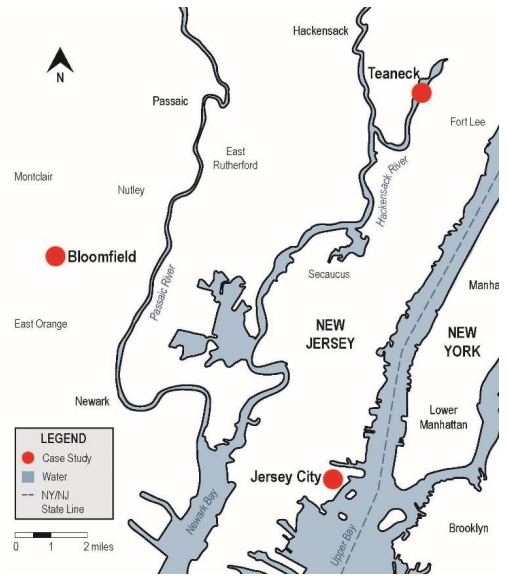
 DownLoad:
DownLoad: 